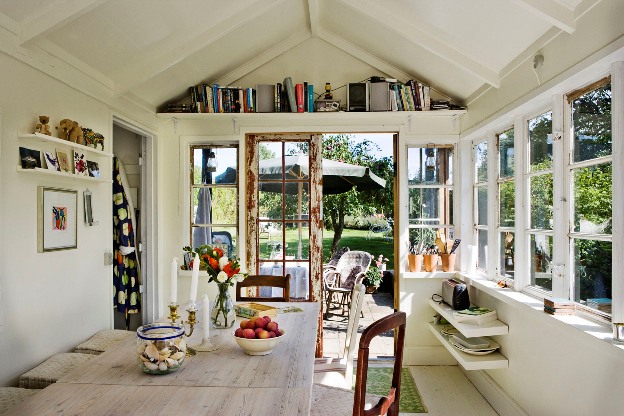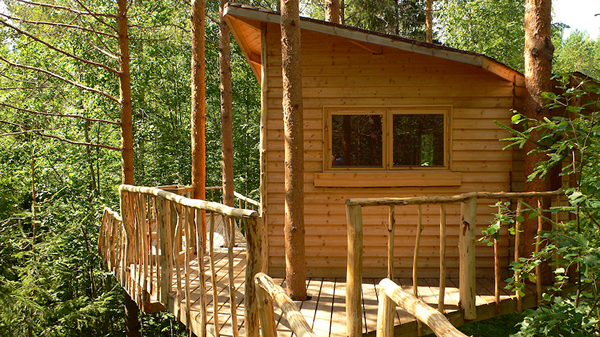Cabin Porn
Free Cabin Porn – A photo blog of cool cabins. “Inspiration for your quiet place somewhere.”

All safe for work; feel free to browse. 🙂

Free Cabin Porn – A photo blog of cool cabins. “Inspiration for your quiet place somewhere.”

All safe for work; feel free to browse. 🙂

The hilarity of this recent news item is only enhanced by my having just finished watching the movie Art School Confidential mere moments before I read it:
BERLIN (AFP) — Renowned French designer Philippe Starck says he is fed up with his job and plans to retire in two years, in an interview published in a German weekly on Thursday.
“I was a producer of materiality and I am ashamed of this fact,” Starck told Die Zeit weekly newspaper… Everything I designed was unnecessary… I will definitely give up in two years’ time. I want to do something else, but I don’t know what yet. I want to find a new way of expressing myself …design is a dreadful form of expression.”
Starck, who is known for his interior design of hotels and Eurostar trains and mass consumption objects ranging from chairs to tooth brushes and lemon juice squeezers, went on to say that he believed that design on the whole was dead.
“In future there will be no more designers. The designers of the future will be the personal coach, the gym trainer, the diet consultant,” he said.
Starck said the only objects that he still felt attached to were “a pillow perhaps and a good mattress.” But the thing one needs most, he added, was the “ability to love”.
Various pictures of moving activities. Photos of May 2006 on Flickr
We’ve spent our three-day weekend painting the kitchen, so I’ve been away from the internets. There’s still a lot of touch-up work to do, but the bulk of the work is finished. My kitchen was pretty fugly before, so the new paint is a serious improvement. The cabinets had been painted a dark green color, and the walls and ceiling and trim were a dingy off-white that always looked dirty even after everything was scrubbed and clean.
Now the cabinets and ceiling and trim work are bright white, and the walls are “spring squash” which is a bright yellow-orange color that looks really sunny and happy. I’m really pleased with how it’s come out; the room looks much bigger and cleaner. There are still some other improvements I’d like to do; I want to mount a light under the cabinets so I can see my food while I’m preparing it. (As Lisa did in her kitchen) and I want to replace the overhead light with the clean, simple, unobtrusive ceiling fan I bought ages ago. I also want to replace the backsplash behind the stove with a clean aluminum panel. The ones that want to get the best paint can have a peek here to get a great finish.
Also, my friend Kathy came over and cut out the extra pipes that ran up the wall in the corner to the now non-existent kitchen that used to be upstairs. I’ll still have to repair the drywall in the corner, but that’s a future project.
The kitchen really needs to be completely ripped out and done over. The floor is bad, there’s very little cabinet or counter space, and the sink is in a really poor spot. The drywall in the whole room needs a makeover. But none of that is realistic right now, so the simple improvements will at least make a grungy room tolerable and cheery.
Asian Influenced Western Design: Japanese Modern
Japanese Aesthetic principle: Wabi-sabi is a beauty of things imperfect, impermanent, and incomplete. It is the beauty of things modest and humble. It is the beauty of things unconventional. Material characteristics of wabi-sabi: suggestion of natural process, irregular, intimate, unpretentious, earthy,simple.
According to Japanese legend, in the sixteenth century Sen no Rikyu sought to learn the Way of Tea. He went to tea-master Takeeno Joo, who tested the younger man by asking him to tend to his garden. Rikyu cleaned up debris and raked the ground until it was perfect, then scrutinized the immaculate garden. Before presenting his work to the master, he shook a cherry tree, causing a few flowers to spill randomly onto the ground.
Later, when he had become one of Japan’s most revered tea-masters, Rikyu served under Toyotomi Hikeyoshi, a warrior known for his ostentatious taste. One day the ruler went to visit Rikyu’s famed morning glory garden and was shocked to find it in shambles, all the flowers uprooted. He entered Rikyu’s humble teahouse to find the master sitting in front of an alcove, where he had placed one perfect morning glory in a clay pot.
To this day, the Japanese revere Rikyu as one who understood to his very core an elusive cultural thread known as wabi-sabi. Emerging in the fifteenth-century as a reaction to the prevailing aesthetic of lavishness, ornamentation, and rich materials, wabi-sabi is the art of finding beauty in imperfection and profundity in earthiness, of revering authenticity above all. In Japan, the concept is now so deeply ingrained that it’s difficult to explain to Westerners; no direct translation exists.
Broadly, wabi-sabi is everything that today’s sleek, mass-produced, technology saturated culture isn’t. It’s flea markets, not department stores; aged wood, not Pergo; rice paper, not glass; one single morning glory, not a dozen red roses. Wabi-sabi understands the tender, raw beauty of a Decembral landscape devoid of color and life, the aching elegance of an abandoned hut on a wintry shore. It celebrates cracks and crevices and rot and all the other marks that time and weather and use leave behind. To discover wabi-sabi is to spend time finding the singular beauty in something that may present itself as decrepit and ugly.
Wabi-sabi reminds us that we are all but transient beings on this planet–that our bodies, as well as the material world around us, are in the process of returning to the dust from which we came. Nature’s cycles of growth, decay, and erosion are embodied in liver spots, rust, frayed edges. Through wabi-sabi, we learn to embrace both the glory and the impersonal sadness of these blemishes, and the march of time they represent.